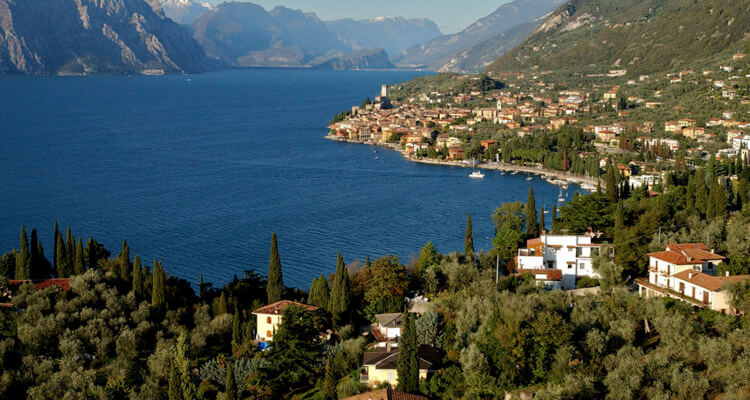A village between rocks and fresh water
Lake Garda – the largest lake in Italy is a popular holiday location. Divided right in the middle between the Veneto and the Lombardia regions, this lake offers so much. It is hard to choose where to go.
On the North-eastern side of Lake Garda, in the Veneto region, a perfect spot makes your dreams come true. The little town of Malcesine pretty much satisfies all the demands one can have from a holiday: tasty food, great wine, interesting boutiques, relaxation, yet also sportive adventures, excursions, entertainment and culture. Basically, an all-round Italian experience.
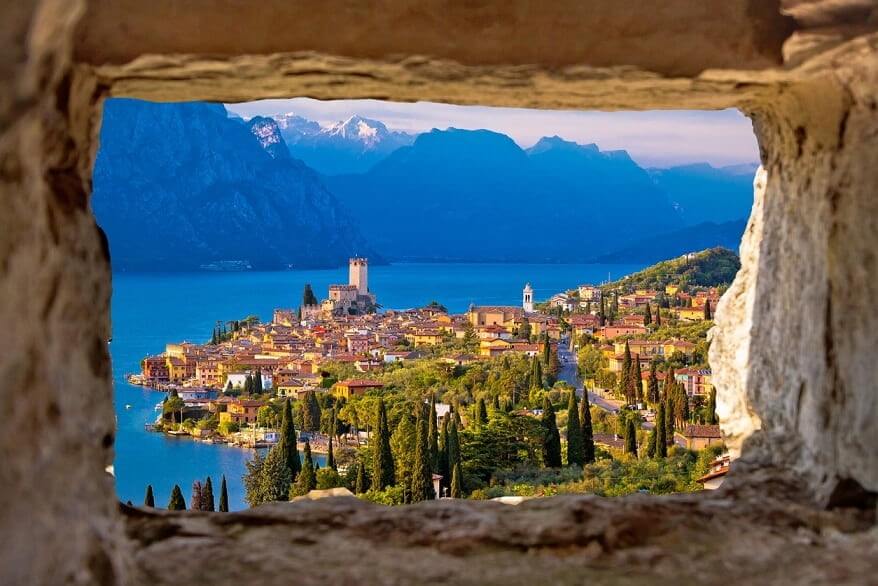
Malcesine, a Borgo Bandiera Arancione
Malcesine is a little town curled up between Lake Garda and the slope of Monte Baldo. Thanks to its strategic position and special shape, Malcesine is one of the beloved treasures of Lake Garda. Characterized by a majestic rocky spur arising from the Lake, it stretches along Via Gardesana Orientale. The panoramic road flows alongside the shores of the Lake, hugging it from side to side.
In Malcesine, the combination of sparkling water and the verdant side of the mountain, standing out immediately above the town, gifts abundance of natural beauties. Moreover, its history and influences from the neighbor regions of Lombardy and Trentino Alto Adige enrich the town of peculiar cultural heritage. Although Malcesine is small in size, it offers a stunning scenario for sport adventures, educational discoveries and relaxing idleness. Here, a visit is worth all year long.
To reward the quality of this place, Malcesine has also been declared “Borgo Bandiera Arancione” by the Touring Club Italiano. It recognizes the excellence of Malcesine’s tourism services and the high value of its tourism offers, attentive to sustainable development, local handicraft, great hospitality and promotion of local resources.
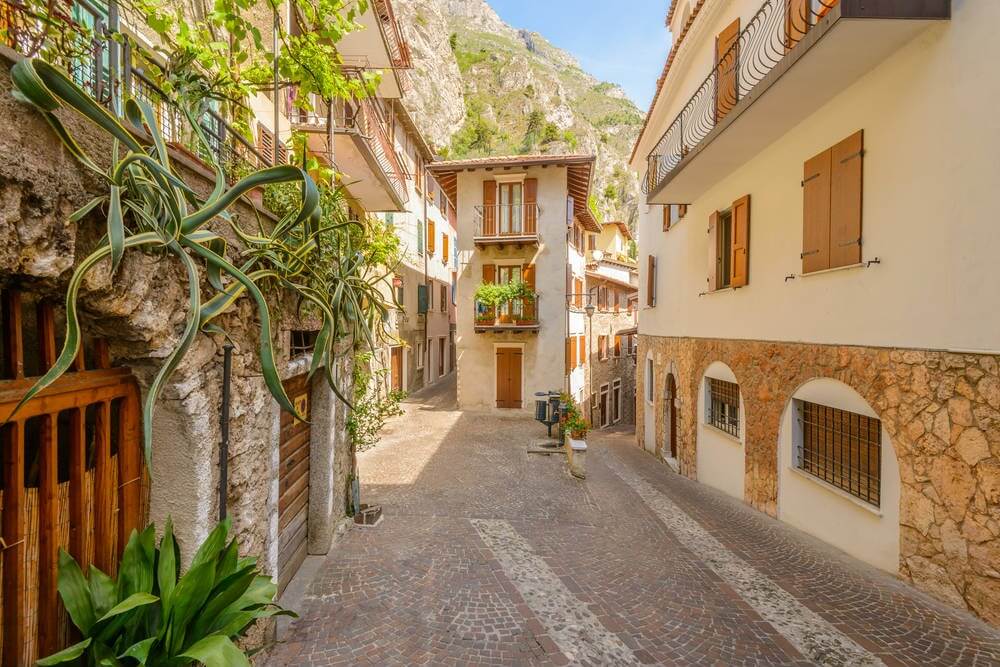
Old Town Malcesine
Malcesine has been occupied since circa 1500 BC, when the Libui settled down there. Over the centuries it became home for several different populations, such as Etruscans, Romans, Ostrogoths and Langobards. From 1277 the ruling family of Verona, the Scaliger, was in charge of the town, losing the power when the Visconti of Milan conquered part of the Lake in 1387. Afterwards, Malcesine got conquered by the Republic of Venice in 1405, which controlled the territory until the rise of Napoleon, in 1797. Finally, in 1815 Malcesine, as the entire Veneto region, passed under the control of the Austrian–Hungarian Empire until 1866, when the Risorgimento’s uprisings led to Italian unification.
Today, Malcesine still preserves the characteristics of its Medieval times, with small squares, narrow streets, brick arches and small old colorful houses attached to one another. The ground floors of the ancient houses have been turned into handicraft shops, ateliers, bistros and local restaurants, unveiling, once in a while, vegetable gardens and terraces with perfumed olive trees. The old town is teemed with thousands of tourists every day, especially during the warm months, from May to September; they make up a lively and joyful atmosphere.
The essence of the history merging with the present is tangible in two buildings of the Old Town. The first one is today’s town hall. Palazzo dei Capitani was built during the Scaliger’s dominance, with the purpose of being the venue of their governance. In 1902 it was declared national monument since it is still able to evoke its ancient splendor. The venue presents the Venetian gothic style, due to renovations during the Venetian sovereignty. Today it is also used as cultural venue, hosting visitors, offering concerts and public events.
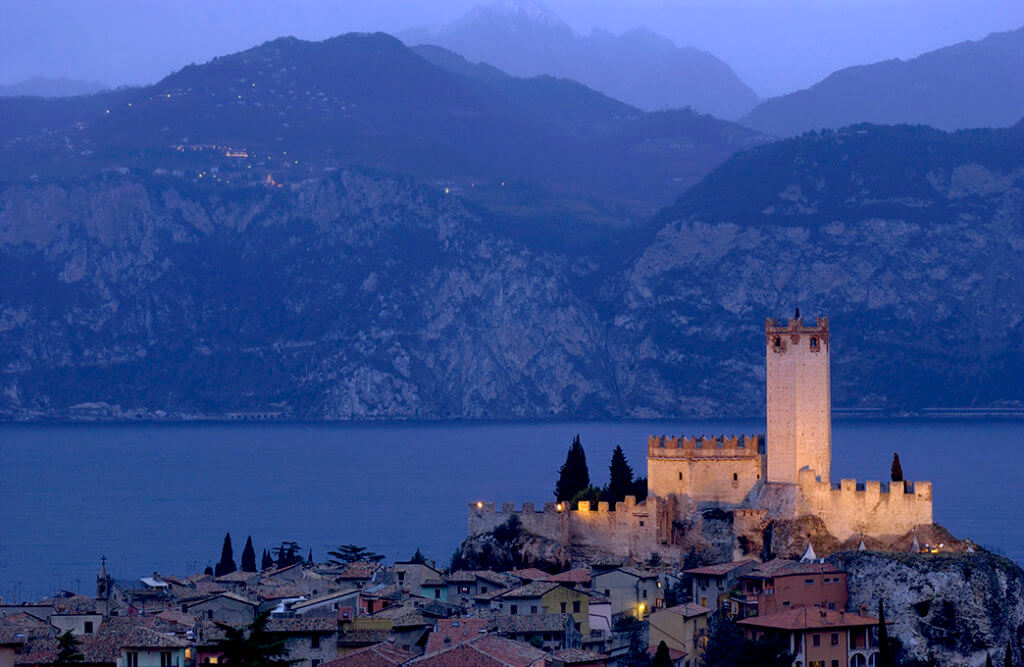
The Castle
The second building needs a paragraph on its own, due to its physical prominence over the town, yet also because of its architecture and the permanent exhibitions it accommodates. Castello Scaligero, built firstly by the Langobards, destroyed, rebuilt and eventually renovated by the Scaliger Family, which gave the castle the medieval shape it still preserves today. The castle is a stunning venue with courtyards, a hidden balcony, fortifications and a tower rising 230 feet above the lake. There are several spots where the lake and the mountains can be admired in their perfect harmony. Even eminent personalities, such as the writer Goethe and the painter Klimt, fell in love with the castle. They praised its colors and charming atmosphere in their works of art.
Castello Scaligero offers events, concerts and also several permanent exhibitions. There is the “Sala Goethe” with documents and anecdotes of Goethe’s travel around Italy. Then, on the ground floor of the Scaliger’s Residence you can find the “Museum of Fishing, lake activities and of Galere Veneziane”. Yet, the real gem of the castle is found in the old “Casermetta”. There, the Natural History Museum of Baldo and Garda has been renovated in 2008, becoming an interesting and truly amusing interactive museum. If you love Lake Garda, this Museum is a must-see. It is a fantastic place to learn about the history, morphology, flora and fauna of the area.
After the visit, you will appreciate the lake even more. The nine rooms of the Museum lead you on a path from the bottom of the Lake Garda, to the peak of Monte Baldo, discovering animals, touching fish, hearing the noises of vegetation and smelling the scents of the two places. The Museum is the perfect combination between education and entertainment.
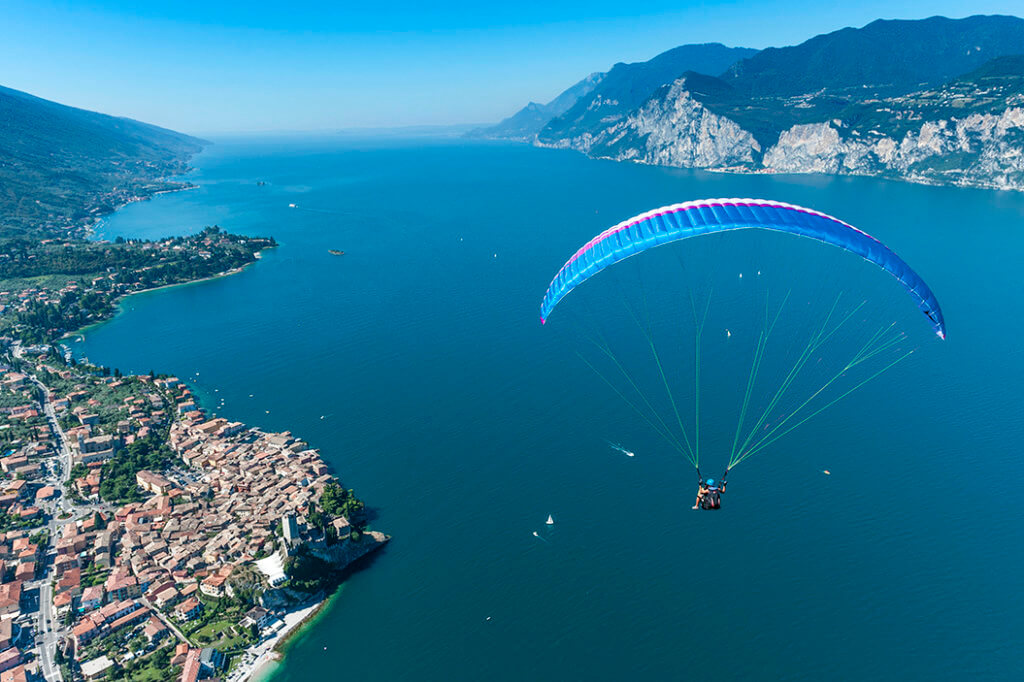
Lake Garda
A lake side promenade lets you walk alongside Garda shore for miles, passing by bars, cafés and rocky beaches of different sizes. Find your niche and jump in the tempting water of the lake. From June to September the average temperature of the water is 71 F – a pretty suitable temperature for comfortable swimming. The water is clean and crystal clear with thousands nuances of blue. The weather is ideal. Lake Garda, in fact, is always accompanied by several different winds, like the Peler from north to south, or the Ora, favored by windsurfers. On the shore, the climate is mild, with a constant breeze driving away mugginess.
Two islands appear in the middle of the lake: The Island of Olive Trees and The Island of Dreams. The former one has a wild vegetation and is famous for scuba divers seeking underwater caves and endemic species of fish. The second one, with a truly evocative name, can be reached by foot when the water of the lake is shallow. This Island is also a well-known spot for scuba divers, since a shipwreck lies nearby, on the bottom of the lake – a real amusement-park for scuba divers.
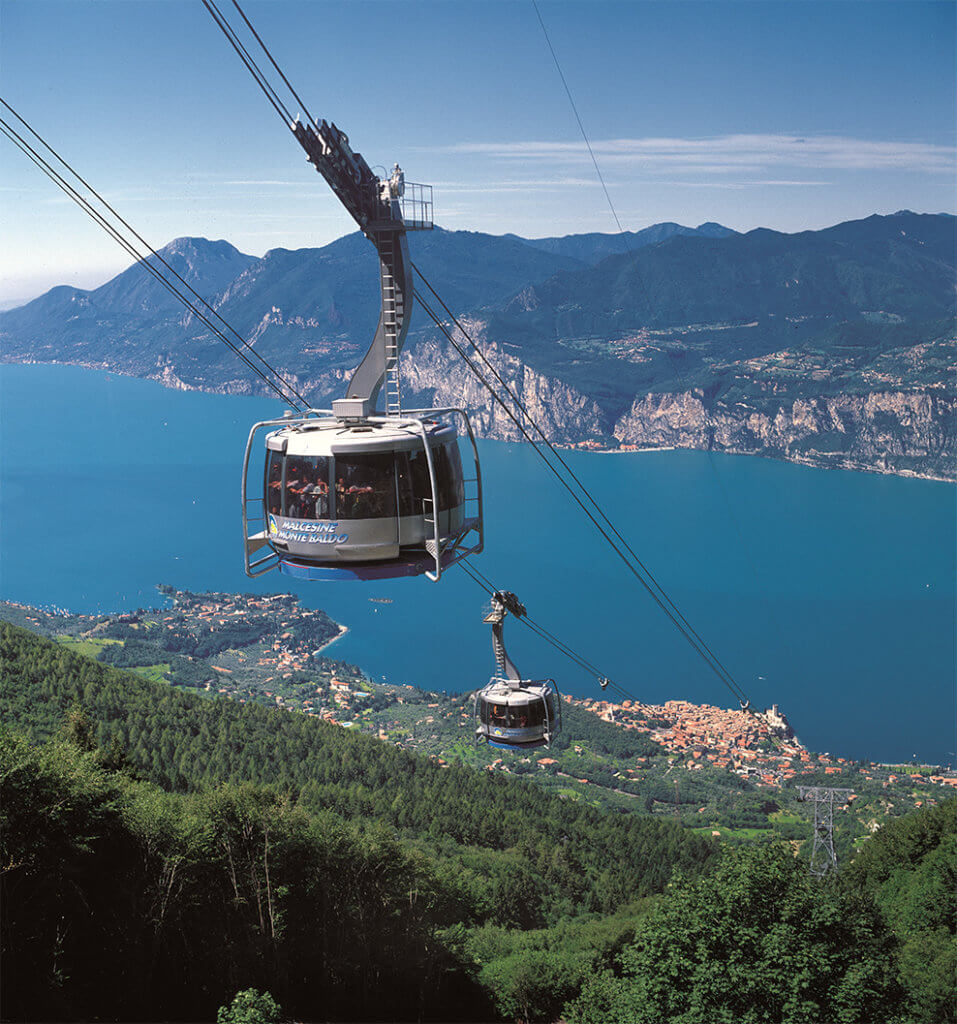
Monte Baldo
From the bottom of Lake Garda emerges a steep mountain range reaching with a leap peaks of over 7200 feet. This is Monte Baldo, peeking out over Malcesine with all its massive presence. It is said that Monte Baldo is the “garden of Europe”. In fact, thanks to the influences of the underneath lake, the climate is favorable for both the Mediterranean and Middle-European landscapes. This provides a great variety of flowers, plants and trees. The fauna of Monte Baldo is abundant as well. Animals like foxes, marmots, deer, chamois, badgers and rarely even some – harmless – bears, live between 200 and 6500 feet of altitude.
Monte Baldo is optimal for winter sports, such as snowboarding and skiing, yet, it also offers great opportunities in summer. You can hike the slope up to the peak or you can use the funicular railway to reach the top effortless, enjoying the all-round view of the entire lake, from Lombardy to the northernmost shore of Trentino Alto Adige. Ready to try out an extreme sport? You’re in the right spot. Paragliding provides you with a breath-taking way to sightsee Malcesine from above.
Water, weather, mountains, sports, culture, food… choose one or choose all reasons to come and visit Malcesine.
Photos: Visit Veneto



